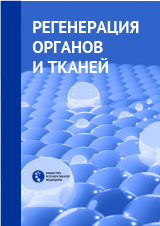
Scientific and practical peer-reviewed journal
Рецензируемый научно-практический журнал «Название журнала на русском» «Nazvanie zhurnala na russkom» зарегистрирован Федеральной службой по надзору в сфере связи, информационных технологий и массовых коммуникаций 05 августа 2014 года (Свидетельство о регистрации ПИ № ФС 77-58913 — печатное издание и свидетельство, Эл № ФС 77-58914 — сетевое издание).
Тираж 1000 экземпляров, периодичность 4 выпуска в год.
Распространение – Российская Федерация, зарубежные страны.
Электронная версия журнала с мультимедийными приложениями доступна по адресу rpmj.ru.
Выходит при поддержке Министерства здравоохранения России и Федерального государственного бюджетного учреждения «Федеральный медицинский исследовательский центр имени П.А.Герцена» Министерства здравоохранения Российской Федерации.
Журнал «Исследования и практика в медицине» - профессиональное медицинское издание, в котором отражаются результаты новейших исследований в области медицинских наук, организации здравоохранения, фундаментальных и прикладных исследований.
В издании представлен уникальный клинический опыт как практических врачей, так и специалистов разных научных и клинических школ. Публикуются новости медицинского и фармацевтического сообществ, научно-практические статьи для целевой аудитории - врачей различных специальностей.
Журнал, в первую очередь, имеет практическую направленность и публикует статьи ведущих специалистов, освещающих актуальные проблемы клиники, диагностики и лечения широкого круга заболеваний, алгоритмы диагностики и терапии различных нозологий. В нем публикуются передовые и оригинальные статьи, краткие сообщения, заметки из практики, лекции и обзоры. Мы стремимся развивать принцип междисциплинарного подхода, делаем все возможное, чтобы наши читатели были в курсе современных достижений медицинской науки и практики, помогаем врачам в освоении современных принципов распознавания и лечения широкого спектра заболеваний.

















